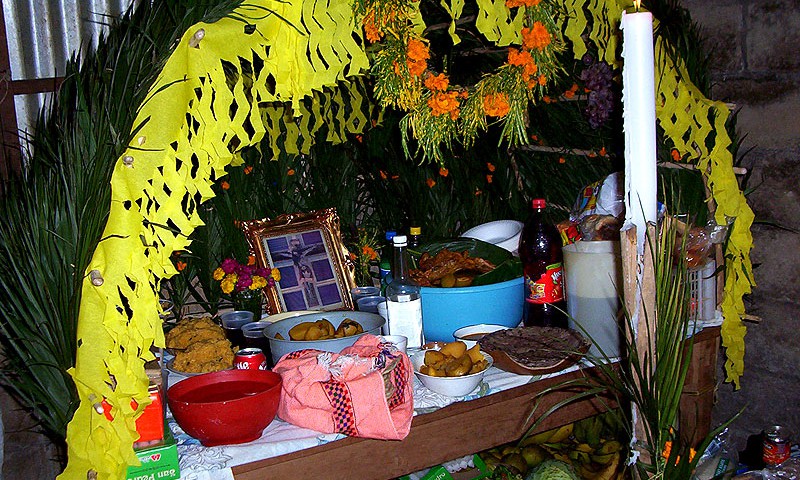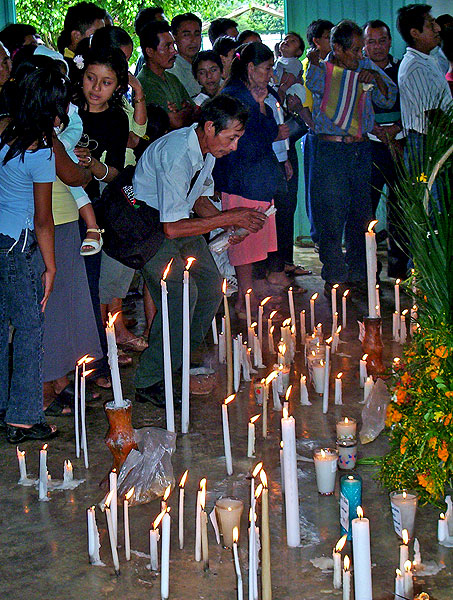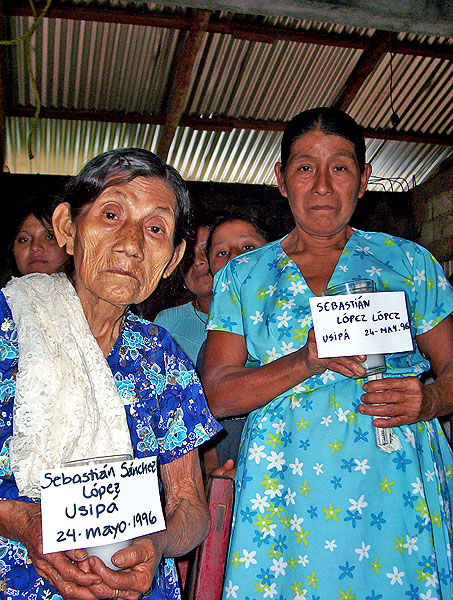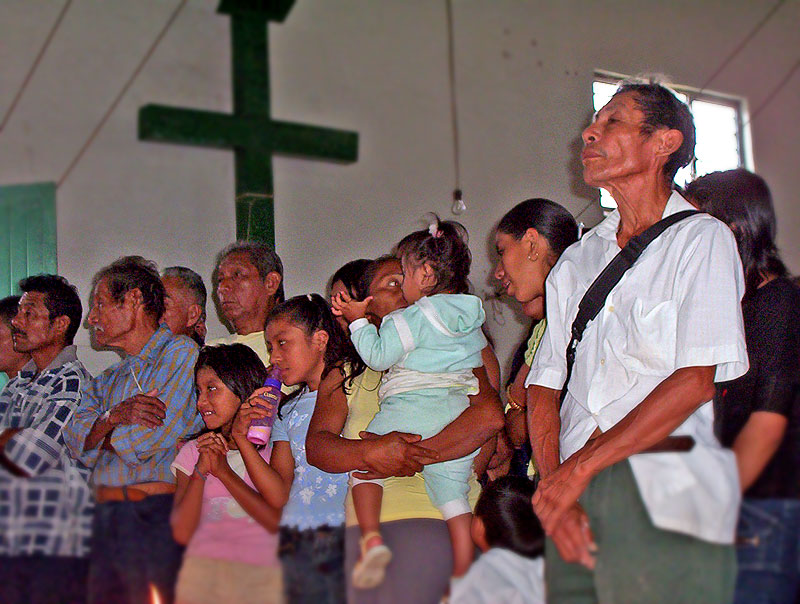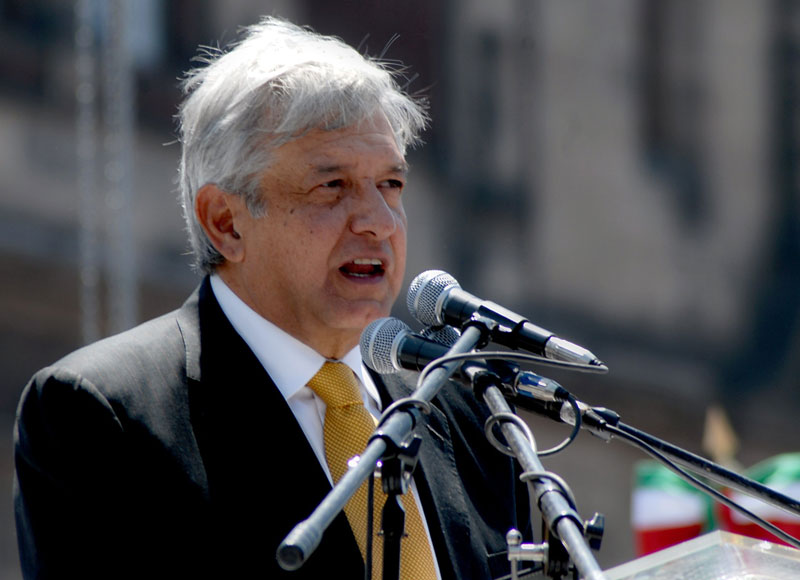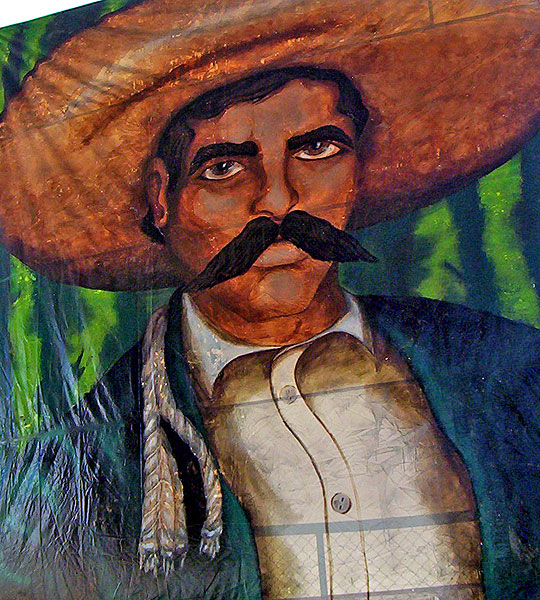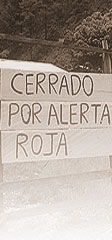
2005
02/01/2006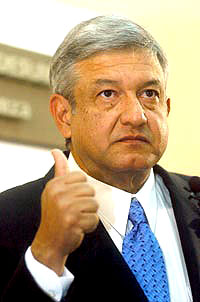
ANALYSIS: Mexico-Chiapas, On the Road to the Elections
28/04/2006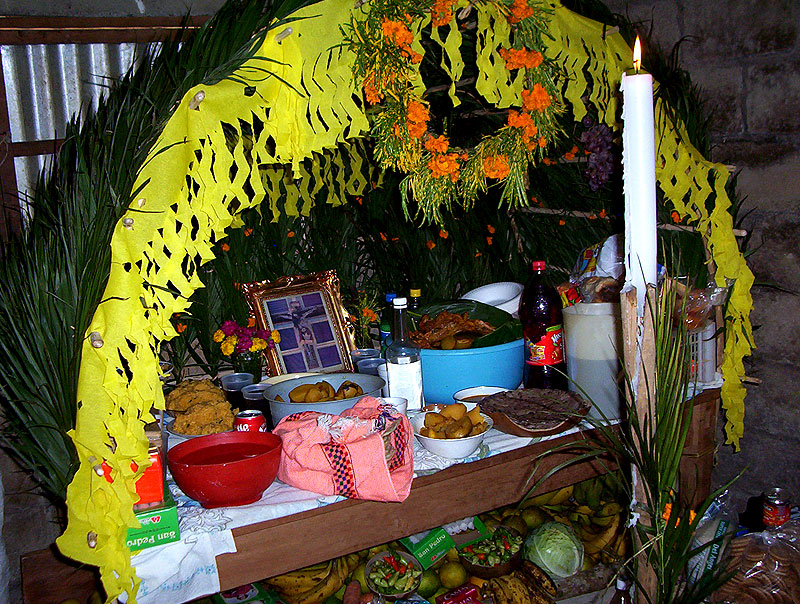 November 2, 2005. El Limar, Municipality of Tila, Northern Zone of the state of Chiapas, Mexico.
November 2, 2005. El Limar, Municipality of Tila, Northern Zone of the state of Chiapas, Mexico.
We find ourselves in the church of Limar. This church has been closed for several years because of the prevalent violence in the region, impeding the parishioners from using the temple. In the center of the church, an altar has been created with the same decorations used throughout the nation for the Day of the Dead celebrations. One by one, those who are present approach the altar, holding a lit candle and a small card that bears the name, the place of origin, and the date of death of one of their family members.
An older man holds a candle with the name Minerva Pérez Torres, originally from the community of Masoja Shucjá, and the date of her death: June 22, 1996. She was between 15 and 17 years old at the time. Minerva´s body was never found. Nevertheless, her death is attributed to the group “Development, Peace and Justice,” who has been accused of paramilitary activity against members of the opposition (sympathizers of the Zapatista Army for National Liberation –EZLN-, the Democratic Revolution Party –PRD-, or the Catholic Church).
This past 2nd of November, about 200 people of the Northern Zone of Chiapas, coming from 11 communities, met to commemorate the more than 120 individuals murdered and disappeared between 1994 and 2000. For the first time, they are meeting publicly to reclaim memory and justice. Many of them are among the more than 4,000 people who were displaced and forced to abandon everything to save their lives.
From October 28th to November 2nd, a series of political and cultural events were also held in San Cristóbal de Las Casas, Chiapas, as part of the “Week for the Dead, Disappeared, and Incarcerated.” This activity was proposed by the EZLN during the Plenary Session in mid-September for the Other Campaign. The plan was adopted by the civil society of San Cristóbal: street theater, videos, posters reclaiming the stories of recent years and victims of repression, singer-songwriters, and reflections were present throughout the center and in various neighborhoods of the city.
In both cases, the idea was to remember and revive all those who have died, been disappeared, or are being held as political prisoners for defending liberty and justice. A moment of collective historic memory aiming not only to keep memories alive, but also to nourish the current struggles and hopes in the construction of a better world for everyone.

